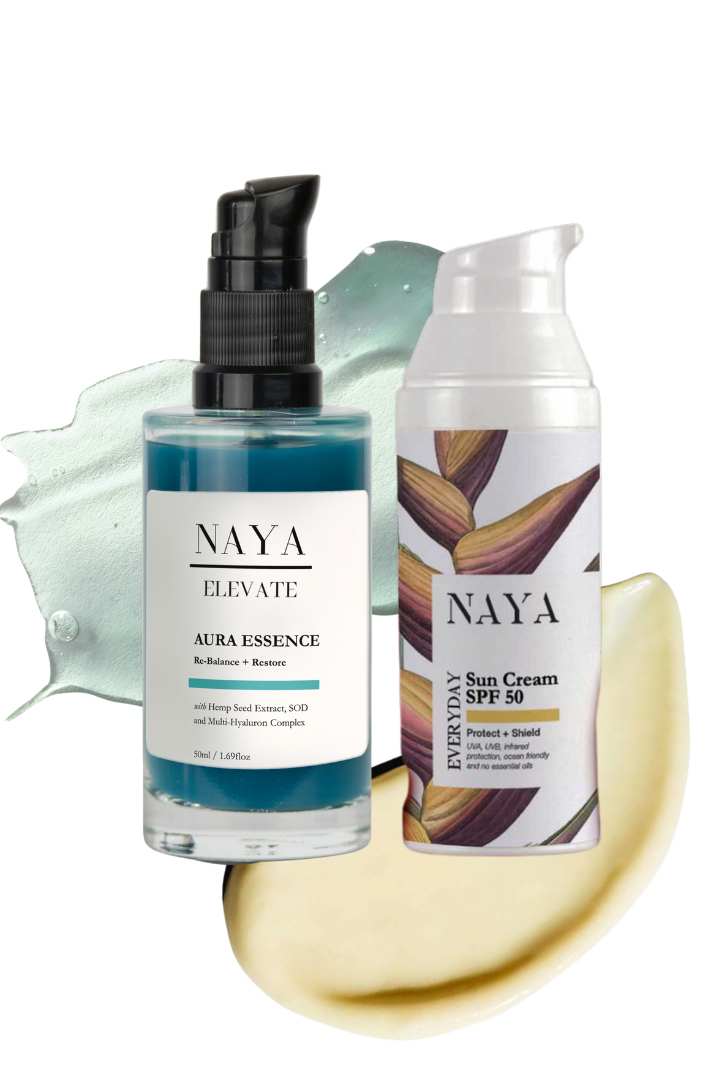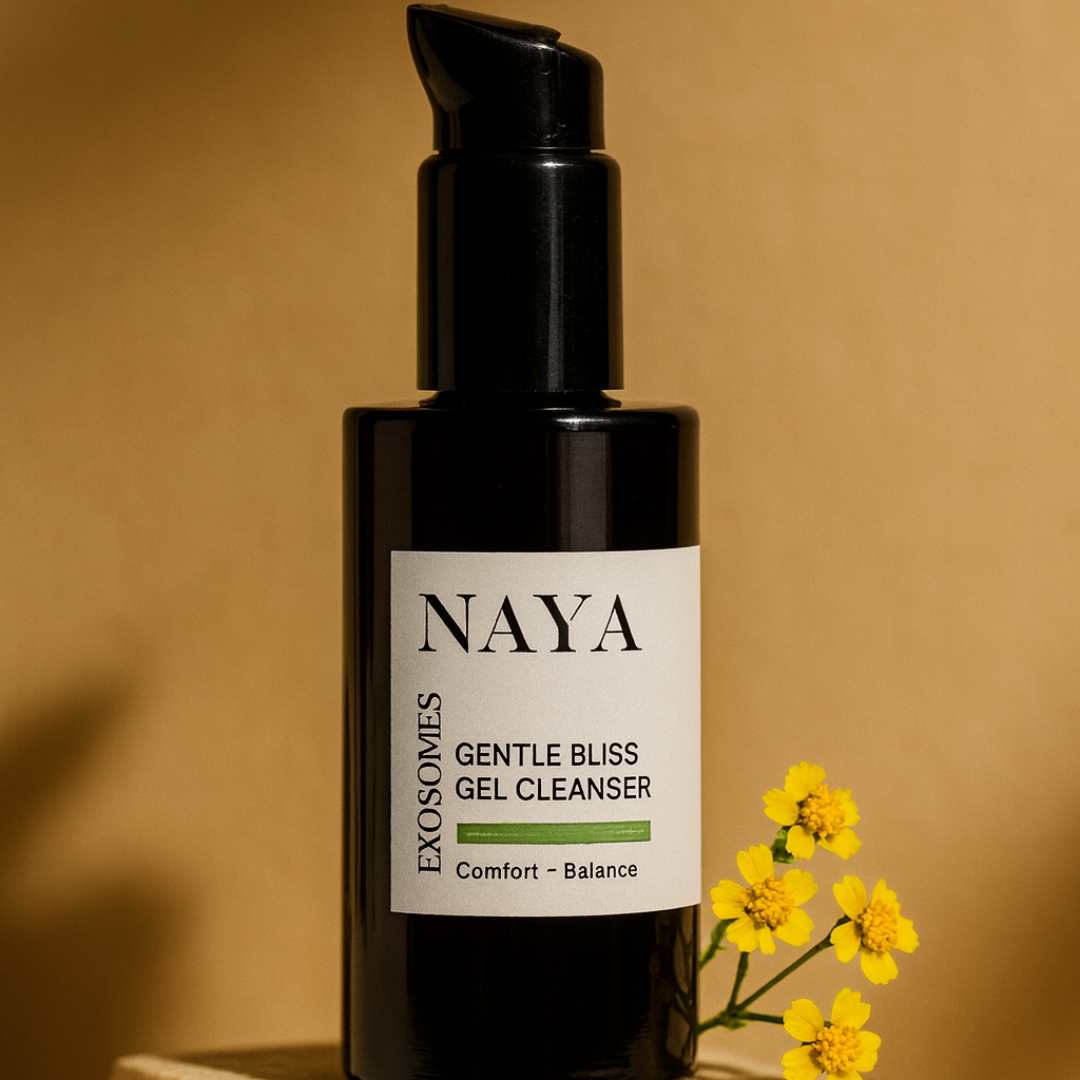Cacay or Rosehip? Discover the Best Oil for Your Skincare Needs
Cacay Oil vs Rosehip Oil
We hope you enjoyed our first and second Episodes of our mini series, where we compare Cacay Oil skin benefits to other high-quality face oils in the market. In our next episode, we will be looking at : Cacay Oil vs Rosehip Oil
During this post, we will compare Cacay Oil vs Rosehip Oil and both face oils benefits for the skin. To help you find out which is the best oil for your needs. Let’s start with an overview.
What is Rosehip Seed Oil?
Used by ancient Egyptians, Mayans, and Native Americans for its skin-clearing and general healing properties, Rosehip Seed Oil remains just as popular today as it was centuries ago. Containing provitamin A (mostly bata-Carotene) and levels of tretinoin (up to .357ml/L) or all-trans-retinoic acid, this versatile oil keeps skin soft and supple, while reducing the appearance of blemishes and scars. High in antioxidants, Rosehip Seed Oil is also a powerful anti-ager. In this series of our exploratory “Cacay Oil vs” blog series, we’ll be taking a closer look at this soothing oil in comparison to our high-quality Cacay Oil and how it’s used in the world of skin care.
Why is Rosehip Seed Oil used in skin care products?
As mentioned earlier, Rosehip Seed Oil contains Vitamin A which is useful for the evening skin routine to tone and promote cell regeneration for a more radiant, brighter look. This oil also contains essential fatty acids, which help with cell regeneration—thereby reducing the appearance of scars—and keep skin soft and supple. Lightweight and easily absorbed (therefore often referred to as a “dry oil”). Also that term ‘dry oil’ can be very misleading. More on this soon. Finally, Rosehip Seed Oil is ideal for all skin types.
Comparison: Cacay Oil vs Rosehip Oil
Cacay Oil is the Amazon’s best secret. And it is starting to become known among some beauty bloggers, and experts. Overall, in comparison to some others such as Argan, Marula, Rosehip and other beautiful oils. Cacay Oil is still a Beauty secret when it comes to the #topshelfie Talk.
So let’s get started.
What is Cacay Oil vs Rosehip Oil Extraction process?
Rosehip and Cacay are both indigenous to South America. Rosehip oil is extracted from seeds of rosehip (Rosa canina L.). An appreciable number of lipophilic antioxidants is present, especially the tocopherols and carotenoids. Rosehip oil also contains high level of phenolic acids, especially p-coumaric acid methyl ester, vanillin, and vanillic acid. Due its high composition of UFAs and antioxidants, this oil has relatively high protection against inflammation and oxidative stress [109]. Shabikin et al. has tested the efficacy of topical rosehip seed oil together with an oral fat-soluble vitamins on different inflammatory dermatitis such as eczema, neurodermatitis, and cheilitis, with promising findings of the topical use of rosehip seed oil on these inflammatory dermatoses [110].
How is Rosehip Seed Oil produced?
Rosehip Seed Oil comes from the seeds of the bright red rosehip fruit of certain types of rose—Rosa aff. rubiginosa (commonly referred to as eglantine or sweetbriar rose) or Rosa moschata (also known as musk rose), both indigenous to the Southern Andes. The oil can also be extracted from the hips of Rosa canina (dog rose), which is found in parts of Europe, Northwest Africa, and Western Asia. Rosehip Seed Oil is notoriously difficult to produce and must be handled by trained professionals. That’s why the quality of rosehip seed oil between brands hugely various. The seeds inside the rosehip are attached to thin fronds that can be fatal if touched or breathed into the lungs. After seeds are carefully removed, they undergo a complex drying process before being cold pressed to extract the oil.
Linoleic Acid: Cacay Oil vs Rosehip Oil
Along with Omega-3s, this powerful Omega-6 essential fatty acid (EFA) is often referred to as Vitamin F. As an EFA, linoleic acid is critical for human health, but is not produced naturally in the body. Topical application strengthens the skin’s barrier, thereby helping to protect us from UV exposure and environmental pollution, both of which cause harmful free radical activity.Cacay Oil can contain more than 70% of Linoleic acid. You can review the results of our Oil on our Science page. Due to its high level of Linoleic Acid, it makes it a very good oil for all types of skin including blemish prone skin or people that suffer from acne. Due to recent studies, it has been identified the reason why some suffer from blemish or acne is due to their deficiency in linoleic acid which helps to reduce inflammation and decongest pores. Thus, Cacay Oil being extremely high in Linoleic Acid is suitable for all skin types. In comparison to Rosehip, Rosehip oil contains substantial UFAs. The most abundant fatty acid is linoleic acid with 35.9–54.8% still much lower than Cacay Oil [141].
Oleic Acid: Cacay Oils vs Rosehip Oil
Oleic Acid is quite rich, often leading to excess oil for people with acne-prone skin, Linoleic Acid is much thinner and lighter, and therefore suitable for those with oily/acne-prone skin. Oleic Acid (Omega 9) can be found in Rosehip in slightly higher levels between 14.7–22.1%, in comparison to Cacay, where it is around 10%-14%. If you tend to have normal to dry skin, you can use oils rich in Oleic acid. However, if you tend to have combination to oily skin, you should consider oils that are high in Linoleic Acid such as our Cacay Oil.
Vitamin A: Cacay Oil vs Rosehip Seed Oil
Often debated and yet research missing that Rosehip Seed Oil contains the proven anti-ageing antioxidant Viamin A. Vitamin A helps in evening out skin tone and fading dark spots while reducing the appearance of wrinkles. It also helps smooth out a dry, rough complexion. However, while we have proven it to be available in Cacay Oil with insitutions in Germany and Colombia – yet research is missing to confirm the existence of Vitamin A in Rosehip Seed Oil even though influencers and brands selling Rosehip Seed Oil are spreading this claim without proof. So don’t buy this oil because of an apparent Vitamin A content as you might get disappointed.
Retinol : Cacay Oil vs Rosehip Oil
In comparison, Cacay contains Vitamin A or also referred to as Retinol. Thus, when it’s applied topically, enzymes in your skin convert retinol into retinaldehyde and then into retinoic acid. Because of the two-step conversion that it has to undergo before the skin can use it, retinol is naturally gentler to the skin. Therefore, Cacay Oil is also suitable to use on sensitive skin. There are claims that Rosehip contain all-trans-retinoic acid. However, we could not find any recent studies to confirm this. Instead, Rosehip contains Pro-Vitamin A or also called beta-carotene which explains the orange colour. Pro-Vitamin A or beta-carotene is a precursor of Vitamin A / Retinol. [2] In addition, there are studies outlining it might contain pythochemicals that potentially mimic retinol. [1]
We do lab studies for every batch of cacay oil before using it. Our Cacay Oil has been compared with pure Retinol and we can confirm that our Cacay Oil contains naturally dervied Retinol. We can only say this for our Cacay oil making it certainly one of the best oils to use.
Vitamin C: Cacay Oil vs Rosehip Oil
Rosehip is rich in Vitamin C and has been long a secret for the tea-lovers. However, the Vitamin C is found in the fruit or pulp itself and not in the seeds. As the Rosehip oil is cold-pressed from the seeds to use it in skincare, claims will need to be verified if any of those products would contain Vitamin C from rosehop in them. Although some research have indicated depending where the botanical is sourced from, the seeds might contain some traces of vitamin c. [6]However, as Vitamin C is water-soluble, Vitamin C is best used either in a powder to maintain its bioavailability or formulated in water-based products such as emulsion to get the benefits of this powerful antioxdiants. Rosehip as a tea can unfold vitamin c’s full potency.
Compare Other Vitamins & Minerals: Cacay Oil vs Rosehip Oil
Rosa genus has been presented as a natural source of antioxidants with a potential use in disease prevention and treatment. Rosa genus stands out for its high content in polyphenols (such as garlic acid, catechin and quercetin), vitamins C, E, B and carotenoids (β-carotenoid, lycopene β-cryptozanthin, rubizanthin, zeazanthin and lutein), which have an antioxidant synergy effect. However, the quality of the oil varies based on where Rosehip Oil is being sourced from and how the oil is being extracted. Only high quality oil can unfold its potency. And we would recommend to only use CO2 extracted Rosehip Oil. The same goes for Cacay Oil. Thus we are proud to work with indigenous communities together that look after their Cacay trees carefully. So that we can cold-press the nuts and achieve potent oil that we use across all our products.
In Conclusion: how will my skin benefit from Rosehip Seed Oil vs Cacay Oil?
So which oil is the best one for you? Is Rosehip better or Cacay Oil the best option? Both oils are beautiful and it is based on your skin needs. To us, it is important to not only produce high-quality and effective skincare products to transform one skin at a time. Rosehip Seed Oil can help with the following but so does high-quality Cacay Oil which you can find in each of our meticulously formulated products. As a summary, Rosehip helos with the following:
- Helps reduce acne
- Promotes softer, more supple skin
- Allows for a brighter, more radiant complexion
- Helps diminish the appearance of fine lines and wrinkles
- Helps diminish the appearance of scars and stretch marks
Committed Beauty
At NAYA, #sustainabilitymatters It is important to look back where and how we source our ingredients from. It is about being transparent and invest into communities. Making us different and unique. And why we are one of the best brands to buy Cacay Oil from. As we work directly with farmers to source the Cacay oil we are using in our products. Our farmers use organic fertilisers, pick cacay nuts from mature trees from the prime forest. Therefore making our Cacay Oil unique as it is community-sourced and sustainable. We urge you to search out those brands that work hand in hand with their producers instead of feeding a vicious circle. As a result, we as a brand go the extra mile to find the purest Cacay Oil possibly available.
Our Cacay Beauty Oil
Try our own Cacay Beauty Oil to see the benefits in action. As our customers say ‘Love at first try’ ! And read our Cacay Oil reviews.
shop our story

Aura Essence


Everyday Glow Serum

Hydration Mask
References
1.Mármol,I.,Sánchez-de-Diego C., Jiménez-Moreno, N., Ancín-Azpilicueta, C., (2017), “Therapeutic Applications of Rosehips from Different Rosa Species”, Lorenza Speranza, Academic Editor, José L. Quiles, Academic Editor, and Sara Franceschelli, Academic Editor, Int J Mol Sci. 2017 Jun; 18(6): 1137. Published online 2017 May 25. doi: 10.3390/ijms18061137. Available online: https://www.ncbi.nlm.nih.gov/pmc/articles/PMC5485961/
2. Tang, G., (2010), “Bioconversion of dietary provtiamin A carotenoids to Vitamin A in humans” , Am J Clin Nutr. 2010 May; 91(5): 1468S–1473S.
Published online 2010 Mar 3. doi: 10.3945/ajcn.2010.28674G . Available online:https://www.ncbi.nlm.nih.gov/pmc/articles/PMC2854912/
3.Lin,Tzu-Kai,Zhong,L., Santiago, J. L., (2018), “Anti-inflammatory and skin barrier repair effects of tropical application of some plant oils”, Int J Mol Sci. 2018 Jan; 19(1): 70. Published online 2017 Dec 27.
4. Ilyasoglu, H. (2012), “Characterization of Rosehip (Rosa canina L.) Seed and Seed Oil”, Pages 1591-1598 | Received 18 Sep 2012, Accepted 13 Feb 2013, Accepted author version posted online: 02 Dec 2013, Published online: 21 Mar 2014.
Available online: https://www.tandfonline.com/doi/full/10.1080/10942912.2013.777075
5.Oprica,L.,BUsca,C.,Zamfirache,M.M.(2015), “Ascorbic Acid Content of Rosehip Fruit depending on Altitude”, Iran J Public Health. 2015 Jan; 44(1): 138–139. Available Online: https://www.ncbi.nlm.nih.gov/pmc/articles/PMC4450003/
6. Winther K, Vinther Hansen AS, Campbell-Tofte J (2015), “Bioactive ingredients of rose hips (Rosa canina L) with special reference to antioxidative and anti-inflammatory properties: in vitro studies”. Department of Nutrition, Exercise and Sports, University of Copenhagen, Frederiksberg C, Denmark; Coordinating Research Unit, Frederiksberg University Hospital, Copenhagen, Denmark. 29 February 2016 Volume 2016:6 Pages 11—23. Available Online on: https://doi.org/10.2147/BTAT.S91385 and https://www.dovepress.com/bioactive-ingredients-of-rose-hips-rosa-canina-l-with-special-referenc-peer-reviewed-fulltext-article-BTAT













Leave a comment